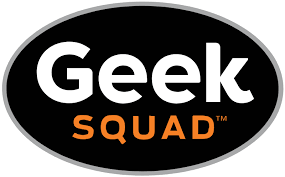By Rose O. Sherman, EdD, RN, NEA-BC, FAAN
Many hospitals now have care delivery redesign initiatives to more of a team-based approach as part of their strategic plan for 2024. This makes sense, especially in hard-to-recruit specialties such as Med-Surg Units, Telemetry, and Emergency Departments. Careful planning and open discussions with stakeholders are critical factors in successful innovation. In the workshops that I have been doing around care delivery redesign, I strongly recommend that the following questions should be asked:
- What would we do if we were planning a new hospital and had the opportunity to design an entirely different care delivery?’
- What are the most time-consuming activities for RNs that others could do?
- What workflow and geographic space challenges consume RN time?
- What equipment challenges do we have that impact care delivery?
- What parts of our nursing care could we eliminate or reduce and lose very little value for the patient?
- Can we look beyond traditional healthcare team members to support inpatient care using other team members?
Discussions and observations about what nurses spend their time on during the day can be pretty revealing. Unsurprisingly, documentation in the EMR and medication are usually in the top five. Beyond this, it can vary from facility to facility. Still, there is one “time suck” that nurse managers often discuss, and that is the time RNs spend fixing broken equipment, reprogramming machines, or doing workarounds in the EMR because links don’t work or their internet speeds are very low.
Many managers report that their IT staff went remote during COVID-19 and have not returned. The burden of fixing broken technology has now been added to the growing to-do list for RNs. As one manager explained, fixing a broken scanner can easily take 20-30 minutes of an RN’s time. Most of these equipment fixes are workarounds designed to get the RN through the shift and are not permanent fixes. We don’t have support staff who regularly check equipment to ensure it works properly, and no one to call.
So, in light of this problem, some health systems are now creatively adding geek squad members to their nursing teams. In a pre-COVID whitepaper titled Joy in Work, the IHI authors discuss how cumulative peebles in the shoe can add to clinician frustration and negativity and lead to turnover. Fixing broken technology falls into this category. Conducting observational research on how RNs spend their time is crucial if the end goal is to have our dwindling number of RNs work to the full scope of their practice. It is possible that every unit does need Geek Squad support, but you won’t know this unless you ask.
© emergingrnleader.com 2023
Brand New Workshop for 2024 – Leading in the New World of Work. Click on Flyer The New World of Work Workshop
Bring the Nurse Leader Coach Workshop to Your Facility Virtually or Onsite. Click Here for the Nurse Leader Coach WS Flyer
New Offering – Redesigning Care Delivery Strategic Planning Session for Your Leadership Team – Click Here for Flyer
Rebuilding Your Nursing Team in 2023: Coming Together after Falling Apart – Click Here for the Flyer
Now Available at Amazon and all Major Book Sellers

Other Programs/Books Your Leaders May Find Valuable
From Traditional Nurse Leader to Nurse Leader Coach – Click Here for the Flyer
For new leaders and emerging leaders, consider doing The Nuts and Bolts of Nursing Leadership Program – Click Here for the Nuts and Bolts Flyer Final
New Leader Development Option in 2023 – Team Coaching Designed to the Unique Needs of Your Organization Leader Coaching Brochure
Read the Nurse Leader Coach – Available at Amazon and Other Book Sellers
Recommended Book by the Association of Critical Care Nurses – The Nuts and Bolts of Nursing Leadership: Your Toolkit for Success



 LinkedIn
LinkedIn Instagram
Instagram